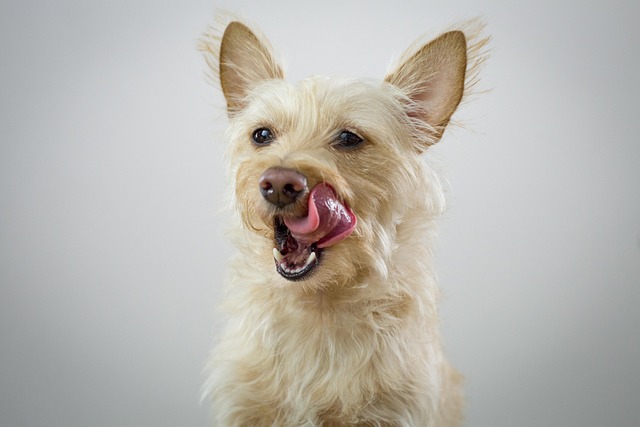
How can I tell if my dog's heatstroke is serious
Let’s be real: It’s a sticky August morning in Los Angeles, and you took your 2-year-old Golden Retriever, Max, for a walk a little later than usual
Watching your dog lick their bowl spotless often feels reassuring – surely they’re satisfied? But that clean dish doesn’t always mean a full belly, and constant begging can leave you second-guessing. Understanding your dog’s genuine satiety signals is crucial for preventing obesity (a massive welfare concern) and ensuring their nutritional needs are met. Let’s decode the signs beyond the empty bowl.
Forget the "clean plate club" mentality. Dogs, especially food-motivated breeds like Labradors or Beagles, often eat until the food vanishes, driven by instinct or past scarcity. An empty bowl simply means the food is gone, not necessarily that their body’s needs are fulfilled. Relying solely on this risks overfeeding, contributing to the pet obesity epidemic linked to arthritis, diabetes, and reduced lifespan – issues increasingly addressed in animal welfare campaigns.
Focus on Body Condition, not just appetite. This is your most reliable guide. Regularly feel your dog’s ribs: you should easily feel them under a slight layer of fat (like the back of your hand), not see them protruding nor struggle to find them. View them from above; a visible waist tuck behind the ribs is ideal. From the side, their belly should tuck up, not hang straight. Your vet can demonstrate this Body Condition Score (BCS) system – it’s a vital tool for responsible ownership.
Observe their energy and behavior post-meal. A comfortably full dog will typically walk away from their bowl calmly, perhaps find a spot to rest, groom themselves, or engage in relaxed play. They seem content, not fixated on food sources or scavenging frantically. True hunger involves restlessness, whining near food areas, or intense focus on food. Remember, learned begging (those irresistible puppy eyes!) is often manipulative, not a sign of physical need.

Watch their eating pace shift. Most dogs start a meal enthusiastically. As they approach fullness, their pace naturally slows. They might take small pauses, look around, or chew more deliberately. If they completely walk away from food before it's gone (and they're healthy), that’s a strong signal they’re satisfied. For dogs who always inhale food, use slow feeders to better observe these subtle changes.
Portion control is your responsibility. Start with the guidelines on your high-quality dog food bag (meeting AAFCO/FEDIAF standards), but remember these are averages. Factors like age, neuter status, activity level, metabolism, and health conditions dramatically alter needs. Use a proper measuring cup, not a random scoop or guesswork. Adjust portions gradually based on BCS and vet advice, not your dog’s eagerness to eat. This precision prevents accidental overfeeding.
Beware of medical red flags. A sudden, ravenous increase in appetite (polyphagia) or failure to gain weight despite eating large amounts warrants an urgent vet visit. Conditions like diabetes, Cushing's disease, parasites, or malabsorption issues can disrupt normal satiety signals. Conversely, a sudden loss of appetite is equally concerning. Regular vet check-ups are non-negotiable for responsible health management under EU/UK/US animal welfare principles.
Manage treats and extras wisely. Those training treats, chews, and table scraps add up fast! Treats shouldn’t exceed 10% of daily calories. Factor them into the daily food allowance. High-value rewards used in training? Reduce the next meal slightly. Free-feeding (leaving food out all day) makes judging intake nearly impossible and often leads to weight gain. Stick to scheduled meals for clear monitoring.
Trust your vet, not the internet. Your veterinarian is your partner in determining your dog’s ideal weight and calorie needs. They consider breed predispositions, existing health issues, and life stage. Seeking their guidance aligns with the duty of care emphasized in animal welfare legislation (like the UK Animal Welfare Act’s "suitable diet" requirement). Avoid fad diets or unsolicited supplement advice online.
Knowing your dog is truly full involves observation, touch, and partnership with your vet. It’s about reading their body, not their enthusiasm for food. By prioritizing body condition scoring, precise portion control, and veterinary insight, you ensure your dog maintains a healthy weight for a longer, more active life. This mindful approach is the heart of truly responsible and loving pet ownership. You’ve got this!

Let’s be real: It’s a sticky August morning in Los Angeles, and you took your 2-year-old Golden Retriever, Max, for a walk a little later than usual

You're enjoying a summer afternoon at the park when you notice your dog has stopped panting and appears disoriented - their gums are bright red

Let’s paint the picture: You’re in your Denver apartment, watching your 4-year-old Boston Terrier, Ruby, plop down mid-play session with her favorite toy

Many dog owners notice their pets nails seem shorter after regular walks,but how much does this daily activity actually help?The answer depends on where you walk—concrete sidewalks or asphalt streets gently file nails as a dog's paws hit the ground

Most dog owners notice their pup scooting across the carpet at some point, but few connect it to impacted anal glands. These small sacs near a dog’s rectum secrete a scent for marking territory

Most vets agree that regular dog teeth cleaning is key to avoiding painful dental issues later. For healthy adult dogs, a professional cleaning at the vet’s office every 12 to 18 months usually works well.